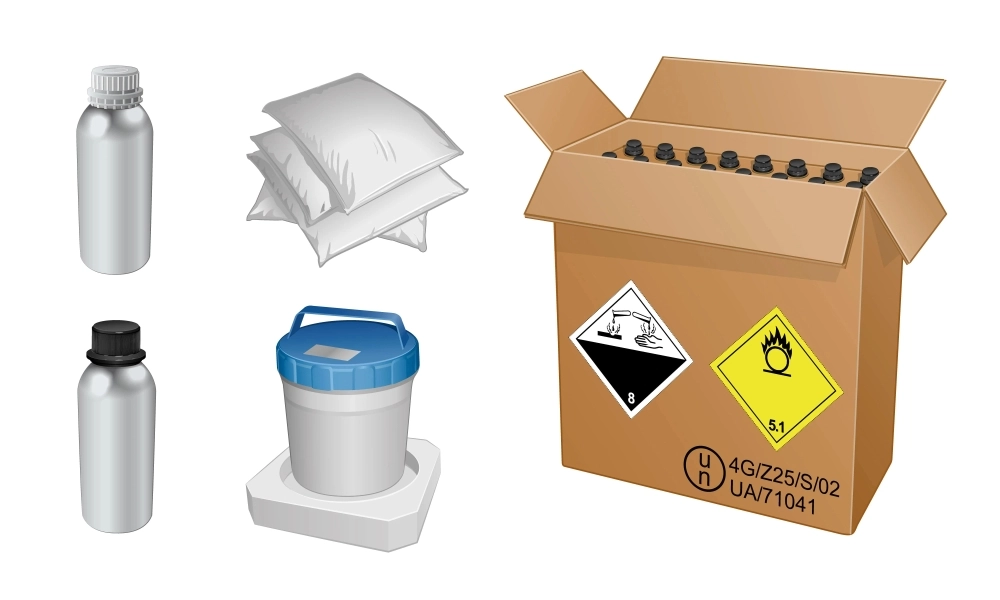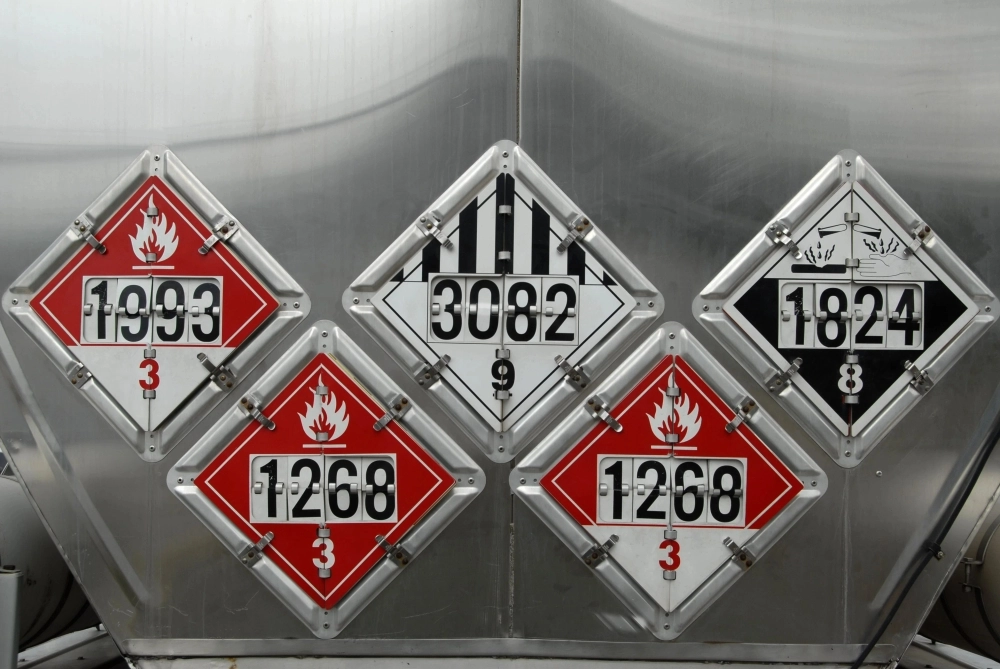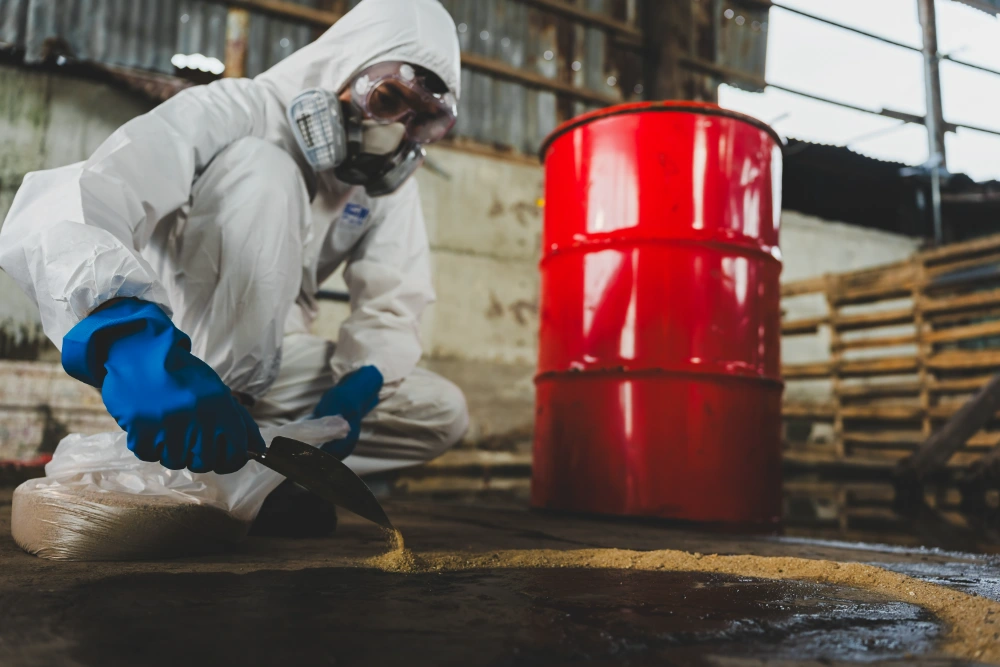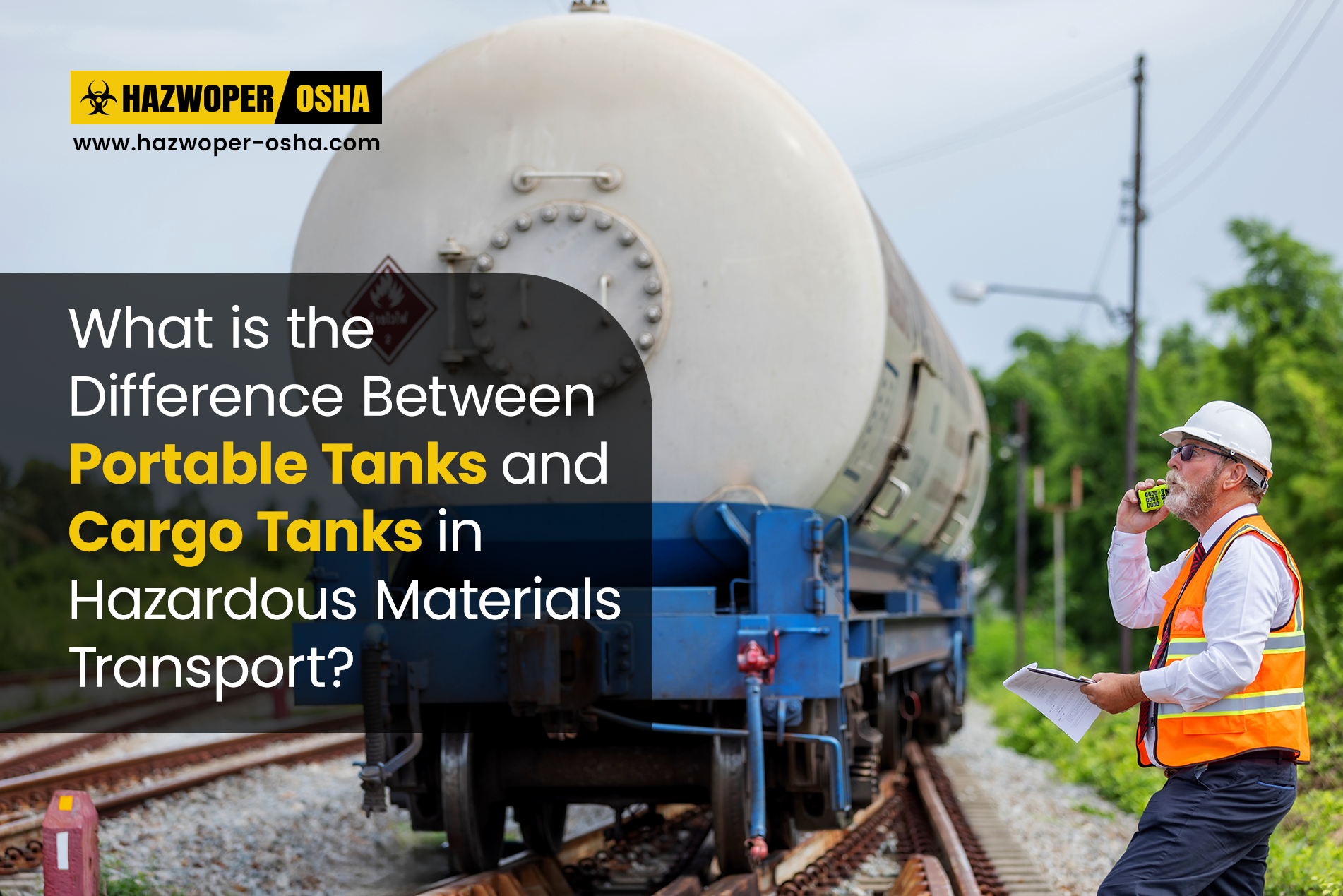How to Safely Transport Hazardous Materials and Goods
6 best practices for the safe shipping of hazardous materials explained

Shipping hazardous materials (hazmat) and other dangerous goods is a daily activity. For instance, oil, petroleum, compressed gasses, explosives, radioactive material, flammable substances, corrosives, and lithium batteries are shipped from one place to another to fulfill their end purpose. As such, it is essential that personnel involved in the transportation and shipping process, be it moving the hazmat from the plant to the warehouse; or tasked with packaging or marking and labeling the dangerous goods, be aware of the risks and the best practices in handling these hazmat packages.
Often, many shippers and carriers embark on shipping hazardous materials locally in the United States and internationally without giving adequate attention to the rules and regulations governing hazmat shipments. For instance, in the United States, the Department of Transportation’s Hazardous Materials Regulations (DOT HMR) regulates the shipping of hazardous materials. Similarly, other countries and regions have different national regulatory bodies to oversee the safe transportation and shipping of hazardous materials and dangerous goods by highway, rail, air, and water.
Statistics recorded by the Pipeline and Hazardous Materials Safety Administration (PHMSA) state that 7,039 incidents occurred with damages amounting to over $36 million during the shipping of hazardous materials in 2021 (2022). According to the PHSMA, in 2022 (as of 22nd September 2022), 3,712 hazmat incidents during transit have been recorded, incurring damages over $38 million (2022). Many of these incidents occur when shipping hazardous materials by highway (PHSMA, 2022).
Hazardous Materials incidents that occur during the transportation of hazmat can have far-reaching consequences for shippers and carriers, the public, and the ecosystem.
Importance of Shipping Hazardous Materials as per Regulations
There are several reasons why businesses and employers must comply with regulations related to shipping hazardous materials and other dangerous goods. One of the most significant is to ensure the safety and security of the personnel involved in the shipping process. Likewise, businesses shipping hazardous materials must also consider the safety and protection of the public and their property. The safe transportation of hazmat is also important from the perspective of safeguarding the environment. Consider the detrimental impact of oil spills on marine life, the environment, and even people. Additionally, if hazardous materials are not appropriately packaged and labeled, in case of an accident or other emergency, the public and those involved in emergency operations would be at greater risk of exposure to poisonous gases or other toxic substances.
Vehicle drivers and emergency responders transporting hazardous materials have a higher possibility of exposure to health risks if something goes wrong while shipping hazardous materials.
Aside from the impact on human health and well-being, non-compliance with regulations related to shipping hazardous materials can increase the business risks of shippers and carriers. In case a hazmat incident occurs, they will be liable for worker compensation, damages, and other penalties levied by regulatory authorities. Such adverse hazmat incidents also lead to loss of reputation, increased customer concerns, and employees who feel less safe at the workplace.
Workers exposed to hazardous materials have a higher risk of suffering from adverse health effects due to increased exposure to radiological, biological, and chemical hazards.
Let’s discuss some key points that would contribute to reducing the risks related to the shipping of hazardous materials while increasing the ability of shippers and carriers to safely transport hazardous materials and other dangerous goods.
#1. Understand which materials and goods are classified as Hazardous Materials and Dangerous Goods
There are different laws and regulations when shipping hazardous materials. These vary from country to country, by type of hazardous material being shipped, and the type of transportation being used – highway, rail, aircraft, or vessel.
In the U.S., the DOT governs the transportation of hazardous materials through its Hazardous Materials Regulations (HMR) under the Code of Federal Regulations (CFR) 49 – Transportation, Parts 100-185. Implementation of these regulations is handled by the Pipeline and Hazardous Materials Safety Administration (PHMSA). The CFR 49 also encompasses specific regulatory requirements by other bodies such as the U.S. Coastguard, the Federal Motor Carrier Safety Administration (FMCSR), and the Federal Railroad Administration, to name a few.
Additionally, air transportation of hazmat must adhere to the International Air Transport Association (IATA)’s Dangerous Goods Regulations, and the International Maritime Dangerous Goods (IMDG) Code must be consulted to meet the requirements of shipping hazardous materials by vessel.
|
Hazardous materials are classified under nine (9) hazard classes by the DOT. They are: Class 1: Explosives Class 2: Gases Class 3: Flammable Liquid and Combustible Liquid Class 4: Flammable Solid, Spontaneously Combustible, and Dangerous When Wet Class 5: Oxidizer and Organic Peroxide Class 6: Poison (Toxic) and Poison Inhalation Hazard Class 7: Radioactive Class 8: Corrosive Class 9: Miscellaneous |
Thus, all shippers, carriers, and their employees must understand the minute details of hazardous materials regulations, how different regulatory bodies classify hazardous materials, and the specifics of the different types of hazardous materials. Remember, something as simple as the quantity of a specific hazardous material could classify it as either a hazardous material or a non-hazardous material.
Our 10-Hour DOT Advanced General Awareness Training course is an ideal learning tool for employers and employees involved in shipping hazardous materials and dangerous goods.

#2. Use Packaging as Specified in Regulations
For hazardous materials containers to remain leak-proof or spill-proof during transportation, shippers and carriers must ensure both inner and outer packaging of the hazardous materials meet the packaging requirements as stated in the DOT regulations, IATA DGR, and IMDG Code. These guidelines include the type of packaging used, the thickness of packaging materials, the types of closures to be used, and even the number of packages inside the outer packaging. Often, the DOT HMR recommends UN-specified packaging materials, and manufacturers and shippers must follow these guidelines. If regulations require other types of packaging, then this must be complied with as relevant.
By following packaging regulations, shippers are safeguarding hazardous materials from spills, leaks, or damage that can lead to a hazmat incident. For a detailed understanding of DOT packaging requirements for shipping hazardous materials, enroll in our 2-Hour DOT Function-Specific Packaging Training course.
#3. Ensure the Hazmat Package is Properly Marked and Labeled
Using packaging as per regulations is not enough. Once the hazardous materials are packaged for transportation, these hazmat packages must then be labeled and marked as per the requirements explained in the HMR. The marking and labeling requirements are specific and can vary depending on the mode of transportation being used.
Employees involved in the shipping of hazardous materials must understand the meanings of these labels and marking to ensure the safe transportation of hazardous materials and goods via highway, rail, air, or water. Our 2-Hour DOT Function-Specific Markings Training and our 2-Hour DOT Function-Specific Labeling Training courses give information that is specific to these two job functions.
#4. Placarding of Transportation Vehicles
 When shipping hazardous materials by highway or rail, the DOT requires appropriate placards to be fixed to tanks, trucks, freight containers, other vehicles, rail cars, and tank cars. When shipping hazardous materials by air, aircraft unit load devices must also be placarded. Placarding helps to clearly announce the presence of hazardous materials. Placarding directs handlers and transporters to easily identify the primary and subsidiary hazards of the hazardous materials being shipped, thereby ensuring suitable precautions are taken when working in and around these vehicles or during an emergency.
When shipping hazardous materials by highway or rail, the DOT requires appropriate placards to be fixed to tanks, trucks, freight containers, other vehicles, rail cars, and tank cars. When shipping hazardous materials by air, aircraft unit load devices must also be placarded. Placarding helps to clearly announce the presence of hazardous materials. Placarding directs handlers and transporters to easily identify the primary and subsidiary hazards of the hazardous materials being shipped, thereby ensuring suitable precautions are taken when working in and around these vehicles or during an emergency.
Hence, employees involved in the hazmat transportation process should ensure that vehicles carrying hazardous materials are correctly placarded. Our 2-Hour DOT Function-Specific Placarding Training course provides general and carrier-specific information for placarding when shipping hazardous materials.
#5. Communicate the Importance of Safe Shipping of Hazmat to Employees
Apart from ensuring meeting the regulatory requirements, employers must communicate to employees the importance of safely shipping hazardous materials. Employees must understand the risks to themselves, their colleagues, the public, their property, and the environment. Employees must comprehend the importance of correctly handling hazardous materials. They must understand that DOT HMR training is necessary for maintaining workplace safety. Employers should know that in addition to any online or classroom training given to employees on the DOT Hazmat Regulations, regular awareness programs and other in-house practical training will improve safety practices and enhance the workplace safety culture.
Moreover, the transportation of lithium batteries is rising due to their increased usage in many devices. Therefore, shippers and carriers must provide specific training to employees on shipping lithium batteries as regulated by the DOT HMR, IATA DGR, and the IMDG Code to ensure they understand the hazards they face as part of their jobs and the ways to minimize them.
Furthermore, vehicle drivers and their assistants operating vehicles carrying hazardous materials must be given training not only on the DOT HMR, IATA DGR, and the IMDG Code requirements but also on safe driving principles and ways to avoid security risks. Today, smartphone usage has made communication with personnel in vehicles transporting hazardous materials more accessible and real-time.
#6. Ensure Safety and Security during Transportation
Today, safety and security are a grave concern when shipping hazardous materials. Ensuring hazardous materials are not hijacked while in transit for use in nefarious purposes has increasing become a concern for shippers and carriers. To reduce such risks, technology, such as GPS, can be used to track hazmat shipments and ensure their safety during transportation. Personnel responsible for driving vehicles carrying hazmat should be aware of these risks and trained on implementing processes and procedures in emergencies.
The DOT also explains the best safety and security practices while shipping hazardous materials. Our 2-Hour DOT Function-Specific Security Awareness Training course provides relevant information.
Reference:
Pipeline and Hazardous Materials Safety Administration (PHMSA). (2022). Yearly Incident Summary Report. Website. https://portal.phmsa.dot.gov/PDMPublicReport/?url=https://portal.phmsa.dot.gov/analytics/saw.dll?Portalpages&PortalPath=%2Fshared%2FPublic%20Website%20Pages%2F_portal%2FYearly%20Incident%20Summary%20Reports

 EN |
EN |  ES
ES
































































































































